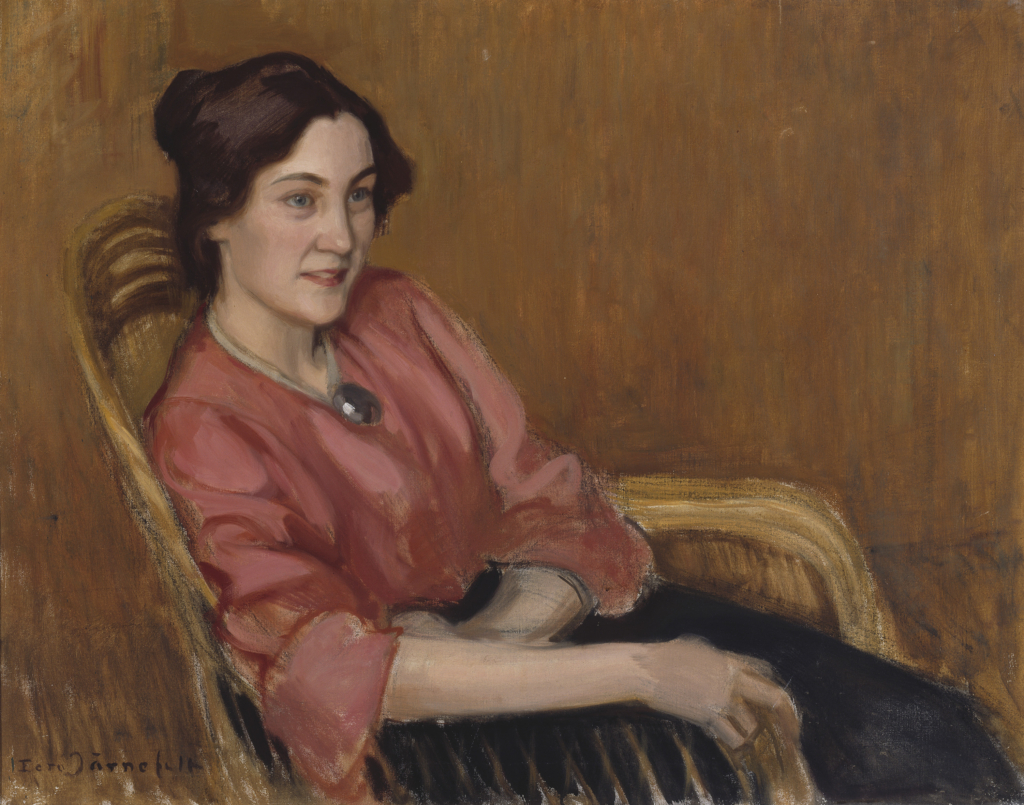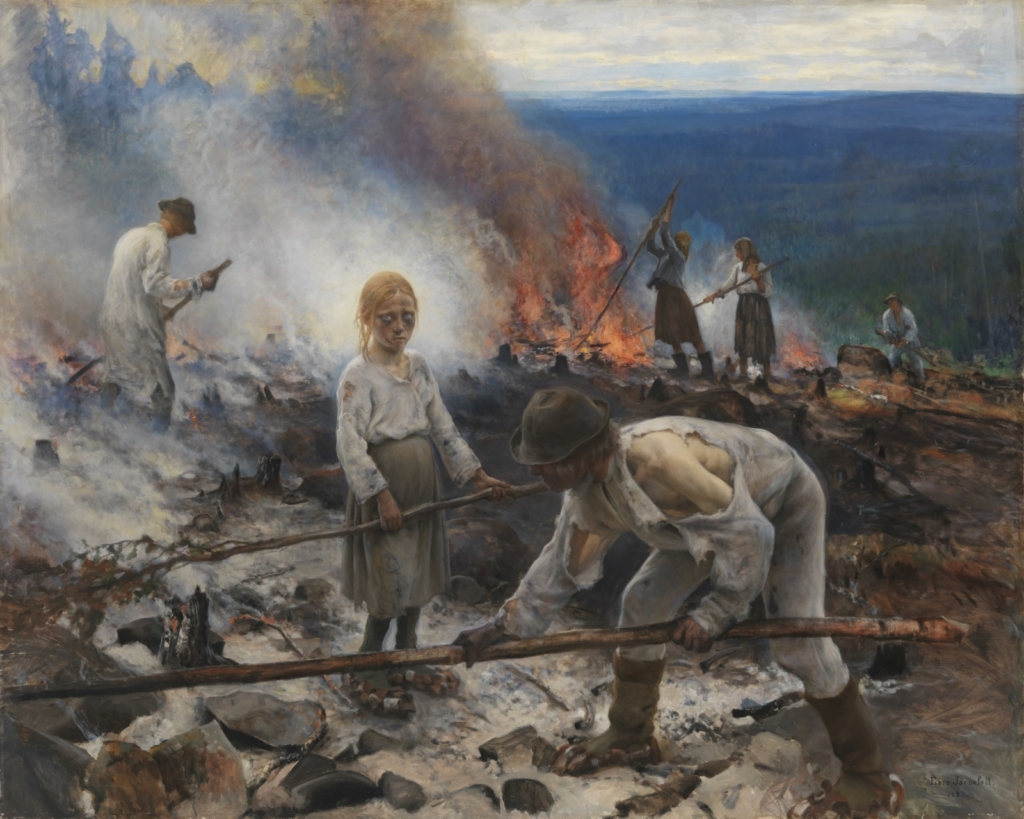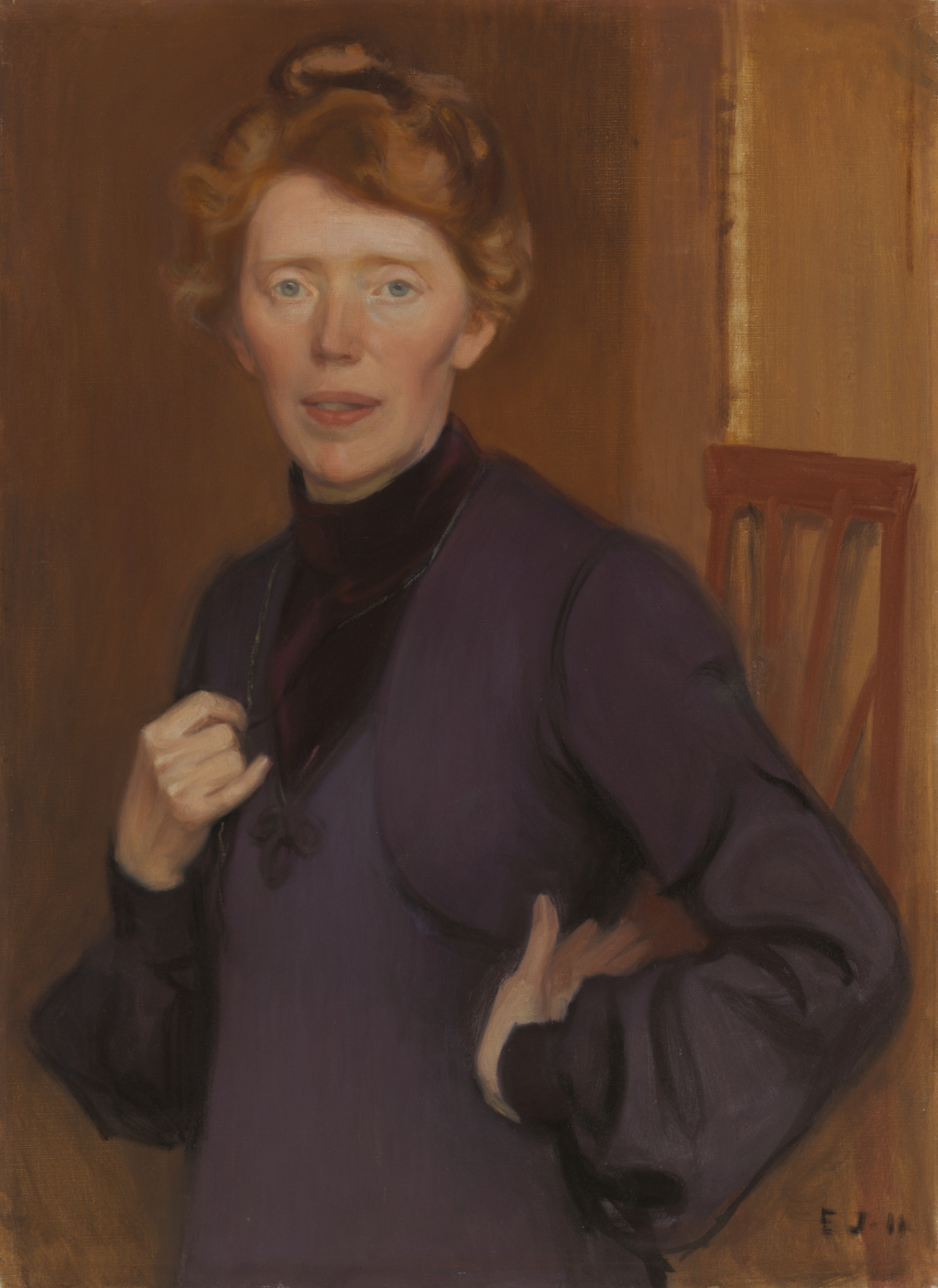
Article categories: Archive News
The Tikanoja Art Museum is hosting an exhibition by the Finnish master Eero Järnefelt
Published: 21.11.2024
An exhibition highlighting the life's work of Eero Järnefelt (1863–1937), one of Finland's most significant nature and portrait painters, will be held at the Tikanoja Art Museum in Vaasa from 23 November 2024 to 25 May 2025. The exhibition also offers an insight into Järnefelt's life as a member of an international cultural family.
Eero Järnefelt (1863–1937) is one of Finland’s most renowned artists, whose paintings reflect his profound interest in Finnish nature and folk life. He is particularly well known for his Koli landscapes and the painting Under the Yoke (Burning the Brushwood). In his works, Järnefelt studied nature from various perspectives. Both the majestic wilderness landscapes and the delicate details of aquatic plants, along with other plants and natural phenomena, held equal value to him. Järnefelt’s depictions of nature raise questions about whether the nature he portrayed still exist and how we relate to our environment today.
Järnefelt’s art is rooted in his family’s fascinating cultural background and is characterised by a focus on capturing the essential traits of both nature and people. He was able to depict his subjects with detailed precision, sensitivity, and a solemn monumentality. The exhibition at the Tikanoja Art Museum sheds light on the different aspects of Järnefelt’s views on landscapes and humanity.

The Tikanoja Art Museum displays Järnefelt’s key works, including the iconic painting Under the Yoke (Burning the Brushwood) from 1893. The exhibition features around 70 original works, along with approximately 30 sketches, which are presented digitally. Many of the works are on loan from the Ateneum Art Museum, various other Finnish museums, and private collections. The exhibition also includes works from the art collection of the Ostrobothnian Museum. The exhibition is curated by Chief Curator Timo Huusko from the Ateneum Art Museum and produced for the Tikanoja Art Museum by Ateneum Art Museum / Finnish National Gallery in collaboration with Vaasa Museums.
Järnefelt painted the prominent figures of his time
For Järnefelt, portraiture usually meant painting people who were important to him. Many of the people he painted were connected in some way to the development of the pro-Finnish intelligentsia. August Ahlqvist, a professor of Finnish, is best remembered for his scathing criticism of Aleksis Kivi’s novel Seven Brothers. J. J. Mikkola was a linguist and a pro-German Finnish nationalist. His wife, Maila Talvio, was a versatile writer. Järnefelt also immortalised journalist and Member of Parliament Tekla Hultin. Between the world wars, Järnefelt essentially attained the status of Finland’s unofficial portrait painter.
The exhibition also highlights Järnefelt’s graphic works, with his lush soft-ground etchings earning a prominent place in the canon of Finnish graphic art.

Promoters of Finnish culture
The exhibition offers a comprehensive overview of Järnefelt’s career. The exhibition, organised around different themes, provides insight into Järnefelt’s family background, study trips, home life, and the connection between his art and the Finnish national identity of his time.
Eero Järnefelt’s family has had a significant influence on the evolution of Finnish culture. His parents adopted the Finnish language and embraced the civic education movement. His father, Alexander, was a general, military topographer, governor and senator while his mother, Elisabeth, was born into a Baltic-German family. All Järnefelt siblings became well-known cultural figures. One brother, Arvid, was a writer of intellectual history while another brother, Armas, was a composer and conductor. Their sister Aino married composer Jean Sibelius. The Järnefelt circle included the writers Minna Canth and Juhani Aho.
Eero Järnefelt is connected to Vaasa through his father, who served as the governor of Vaasa Province from 1888 to 1894. Alexander Järnefelt lived on Rantakatu, and the family rented the Tottesund Manor in Maksamaa as their summer residence from 1891 to 1892. Järnefelt’s sister Aino got married at Tottesund. Eero Järnefelt was married to Saimi Swan. They wed in 1890 and had five children. Her parents, like his, were supporters of the Finnish nationalist Fennoman movement.
The exhibition catalogue provides new research findings
The exhibition is complemented by a catalogue, published in Finnish, Swedish, and English, which takes a closer look at Järnefelt’s life and works. It also provides new information and research on Järnefelt’s family, travels, and his home life at Suviranta. The publication features contributions from Timo Huusko, Anna-Maria von Bonsdorff, Julia Donner, Teemu Keskisarja, Minna Maijala, Tutta Palin, and Hanne Selkokari.
The exhibition, which received an enthusiastic reception at the Ateneum Art Museum, will be on display at the Tikanoja Art Museum in Vaasa from 23 November 2024 to 25 May 2025. The exhibition will be accompanied by various events, including a curator’s tour led by Timo Huusko and chamber music concerts.
